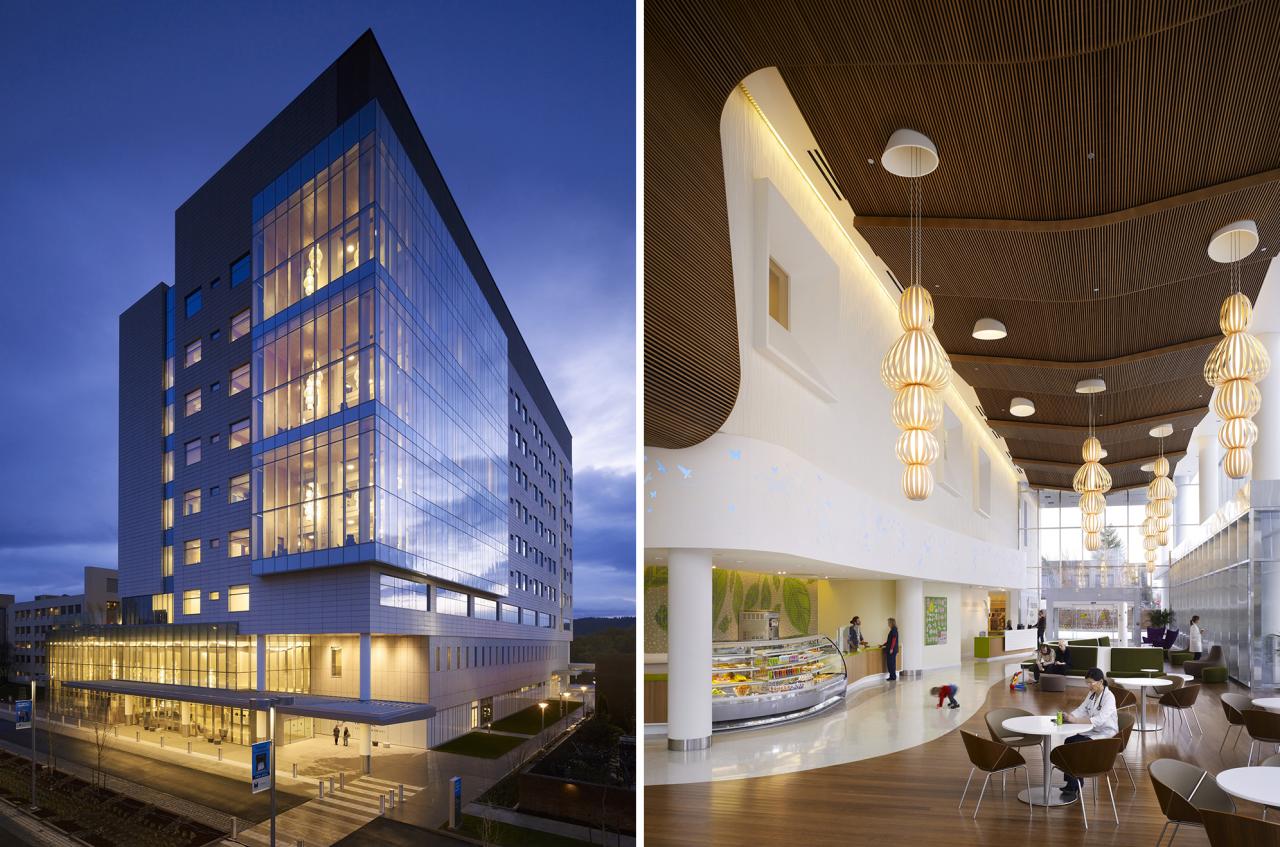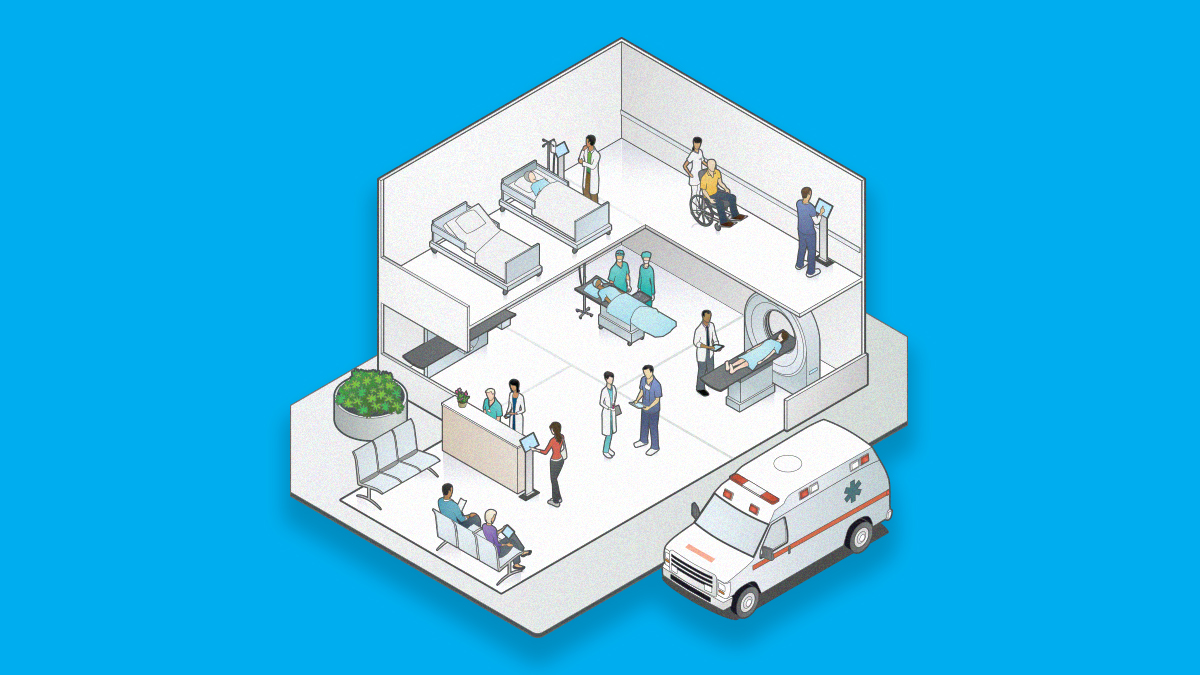Designing hospitals for accident response efficiency sets the stage for this enthralling narrative, offering readers a glimpse into a story that is rich in detail and brimming with originality from the outset. From key factors to architectural elements, this topic delves into the intricate world of hospital design with a focus on optimizing emergency response.
Exploring the vital components that contribute to a hospital’s ability to handle accidents efficiently, this discussion promises to shed light on the innovative strategies and technologies shaping the future of healthcare facilities.
Factors to consider when designing hospitals for accident response efficiency

When designing hospitals for efficient accident response, several factors must be taken into consideration to ensure timely and effective care for patients in critical situations. Key areas within a hospital, such as layout, flow, and technology integration, play a crucial role in enhancing response times and overall efficiency.
Key Areas Impacting Response Efficiency
- The Emergency Department (ED): The layout and organization of the ED can significantly impact response times. Designing the space to optimize flow and minimize distances between key areas such as triage, treatment rooms, and imaging facilities can help expedite care for patients.
- Trauma Centers: Hospitals equipped with designated trauma centers that are easily accessible and well-equipped can efficiently handle critical cases and provide specialized care in a timely manner.
- Critical Care Units: The proximity of critical care units to the ED and operating rooms can streamline the transfer of patients requiring intensive care, reducing response times and improving outcomes.
Importance of Layout and Flow
Effective layout and flow within a hospital are essential for optimizing accident response efficiency. By designing clear pathways, minimizing bottlenecks, and ensuring easy access to key areas, healthcare providers can navigate the facility quickly and efficiently, reducing delays in patient care.
Additionally, well-defined zones for different levels of care can help prioritize treatment based on the severity of injuries, further enhancing response times.
Technology Integration for Enhancing Response Times
Integrating technology into hospital design can significantly improve response times during accidents. For example, implementing electronic health records (EHRs) that are accessible from various points within the hospital can provide healthcare providers with real-time information about a patient’s medical history, allergies, and current medications, enabling quicker decision-making and treatment.
Furthermore, the use of telemedicine and remote monitoring systems can facilitate consultations with specialists and expedite the delivery of specialized care to patients in critical condition.
Examples of Successful Hospital Designs
- The Royal London Hospital in the UK: This hospital is known for its efficient accident response system, featuring a dedicated trauma center with direct access to the helipad, allowing for swift transport and treatment of critically injured patients.
- Mayo Clinic in the US: Mayo Clinic’s integrated approach to hospital design incorporates advanced technology, centralized critical care units, and streamlined pathways for healthcare providers, resulting in reduced response times and improved patient outcomes.
Role of architectural elements in designing hospitals for efficient accident response

Clear signage and wayfinding are crucial in emergency situations as they help guide both staff and patients to the right areas quickly and efficiently. This can significantly reduce response times and ensure that individuals receive the care they need as soon as possible.
Significance of clear signage and wayfinding in emergency situations
- Clear signage can direct emergency responders to the appropriate areas without confusion or delay.
- Well-designed wayfinding systems can help patients and visitors navigate the hospital easily during stressful situations.
- Effective signage can also improve communication among staff members, leading to better coordination and faster response times.
Impact of natural light and ventilation on response environments
- Natural light and ventilation can create a more calming and healing environment for patients and staff, reducing stress levels and improving overall well-being.
- Proper ventilation systems can help prevent the spread of infections and ensure a healthier environment for patients and staff.
- Access to natural light can also improve visibility and help staff work more efficiently during emergency situations.
Effect of color schemes on staff morale and patient outcomes
- Well-chosen color schemes can positively impact staff morale and create a more uplifting and positive work environment.
- Certain colors have been shown to promote healing and relaxation, which can benefit patient outcomes and recovery.
- Color-coded zones can also help staff quickly identify different areas and respond to emergencies effectively.
Use of flexible spaces for versatile accident response scenarios
- Flexible spaces allow hospitals to adapt quickly to changing circumstances and accommodate different types of accidents or emergencies.
- Movable partitions and furniture can create versatile spaces that can be reconfigured as needed to optimize response efforts.
- Multi-purpose areas can serve various functions, from triage to treatment, depending on the situation, enhancing overall efficiency and effectiveness of accident response.
Technology integration in hospital design for optimal accident response

Technology plays a crucial role in enhancing the efficiency of accident response in hospitals. By integrating advanced technological solutions, hospitals can streamline communication, monitoring, and coordination during emergency situations.
Benefits of telemedicine and remote monitoring in emergency situations
Telemedicine and remote monitoring enable healthcare professionals to assess and treat patients remotely, reducing response time and ensuring timely medical intervention. These technologies are particularly valuable in situations where immediate physical presence may not be possible.
Role of IoT devices in tracking equipment and enhancing communication
IoT devices allow hospitals to track the location and status of medical equipment in real-time, ensuring that essential tools are readily available when needed. Additionally, IoT devices facilitate seamless communication between healthcare staff, promoting efficient collaboration and information sharing.
Importance of centralized control systems for quick response coordination
Centralized control systems provide a centralized platform for monitoring and managing various aspects of hospital operations, including emergency response protocols. By centralizing control, hospitals can ensure quick and coordinated responses to accidents, minimizing delays and improving patient outcomes.
Examples of innovative technologies transforming hospital accident response
- AI-powered triage systems that prioritize patient care based on severity
- Robotic surgery systems for precise and minimally invasive procedures
- Wearable devices for continuous patient monitoring and data collection
- Augmented reality tools for surgical planning and training
Training and protocols for staff in hospitals designed for efficient accident response
Regular drills and simulations play a crucial role in ensuring that hospital staff are prepared to respond effectively to accidents and emergencies. These training exercises help familiarize employees with protocols, equipment, and procedures, ultimately improving response times and patient outcomes.
Importance of Regular Drills and Simulations
- Drills and simulations help staff practice their roles and responsibilities in a controlled environment, allowing them to identify areas for improvement.
- By simulating various scenarios, employees can refine their skills, enhance teamwork, and become more confident in their ability to handle emergencies.
- Regular training ensures that staff are up-to-date with the latest protocols and best practices, increasing overall preparedness.
Impact of Clear Protocols and Communication Channels
- Clear protocols and communication channels are essential for streamlining the response process and minimizing confusion during emergencies.
- Defined roles and responsibilities help staff know what is expected of them, reducing decision-making time and improving coordination.
- Effective communication ensures that information is relayed accurately and efficiently, enabling swift and coordinated action.
Role of Designated Response Teams
- Designated response teams, such as trauma teams or code blue teams, are specialized groups trained to respond quickly and effectively to specific types of emergencies.
- These teams are essential in ensuring rapid assessment, treatment, and transport of patients, ultimately improving outcomes and survival rates.
- Assigning specific roles within response teams helps optimize resource allocation and ensure a coordinated response to complex situations.
Best Practices for Ongoing Training and Skill Development
- Regularly review and update training protocols to reflect the latest evidence-based practices and guidelines in emergency medicine.
- Encourage staff to participate in continuing education programs, workshops, and simulation exercises to enhance their skills and knowledge.
- Provide feedback and debriefing sessions after drills to identify areas for improvement and implement corrective actions for enhanced performance.
Closing Notes
As we conclude this exploration of designing hospitals for accident response efficiency, it becomes evident that the intersection of design, technology, and training plays a crucial role in enhancing emergency care. By prioritizing efficiency and effectiveness in hospital design, we pave the way for a safer and more responsive healthcare system.
FAQ
What are some key areas within a hospital that impact response efficiency?
Key areas include emergency department layout, triage processes, and access to necessary equipment.
How can technology integration enhance response times in hospitals?
Technology integration can improve response times by enabling quicker communication, remote monitoring, and centralized control systems.
What role do architectural elements like clear signage play in accident response efficiency?
Clear signage aids in wayfinding during emergencies, helping both staff and patients navigate the hospital efficiently.
Why is staff training important in hospitals designed for efficient accident response?
Staff training ensures preparedness, clear communication, and the ability to handle different types of accidents effectively.









